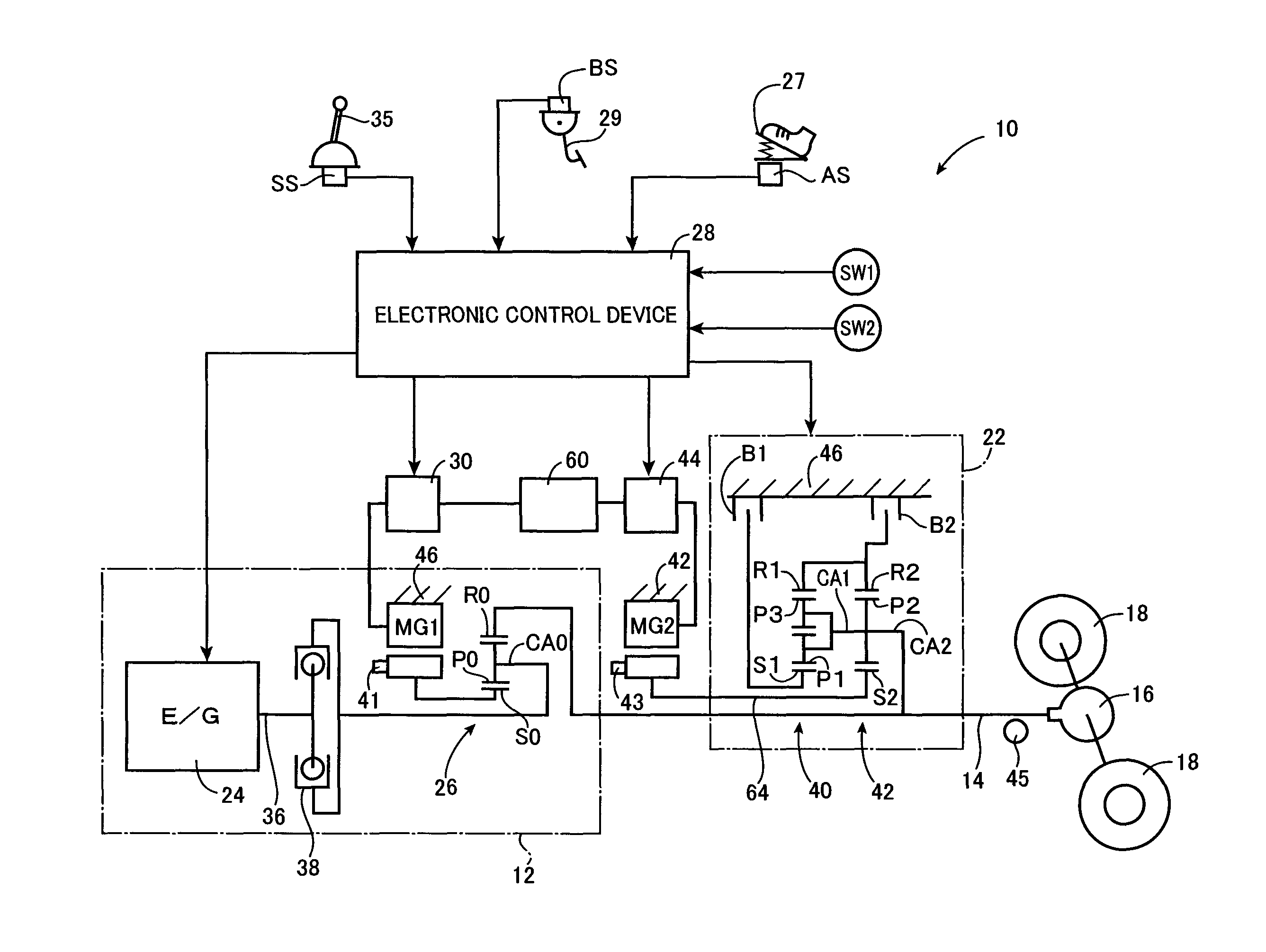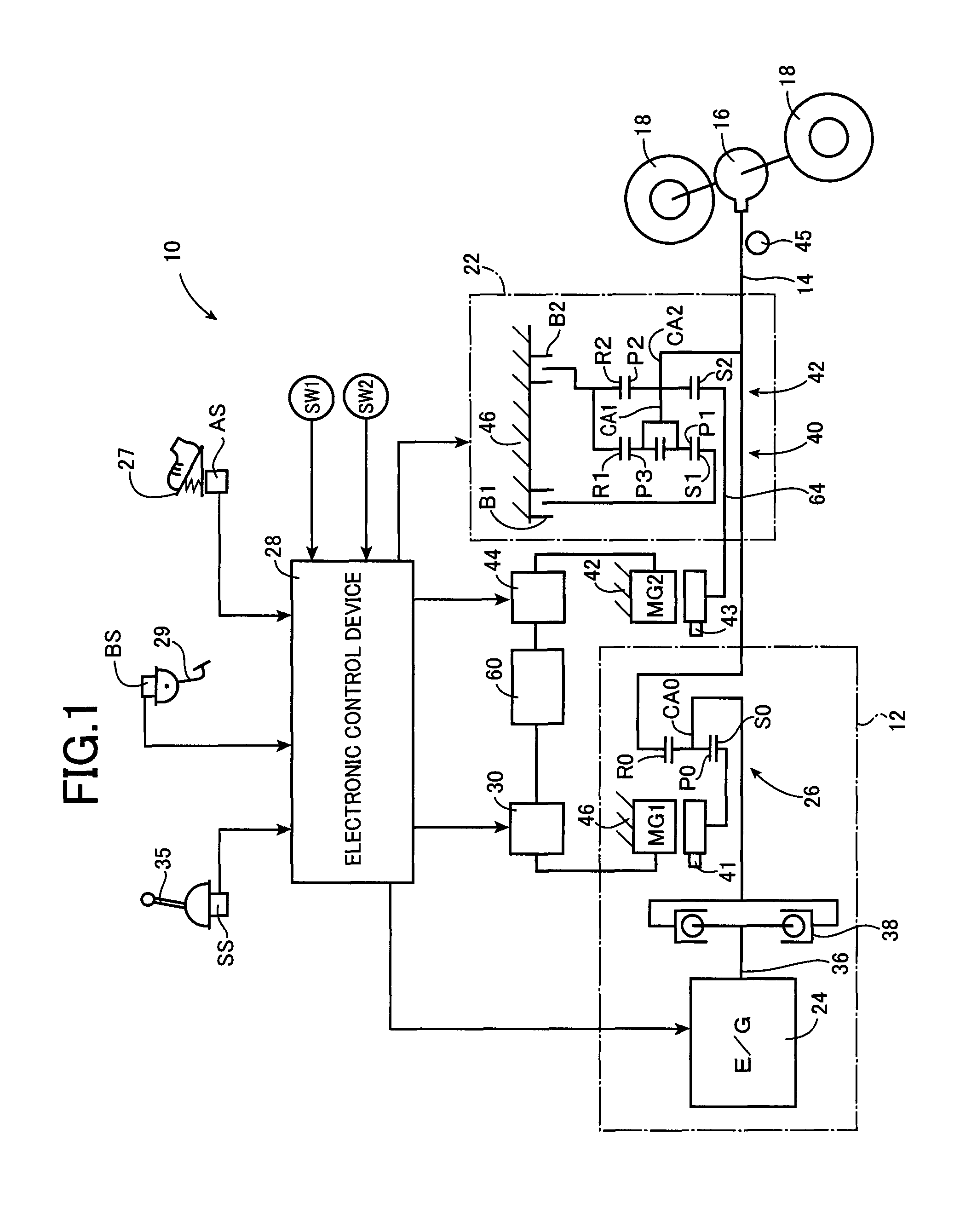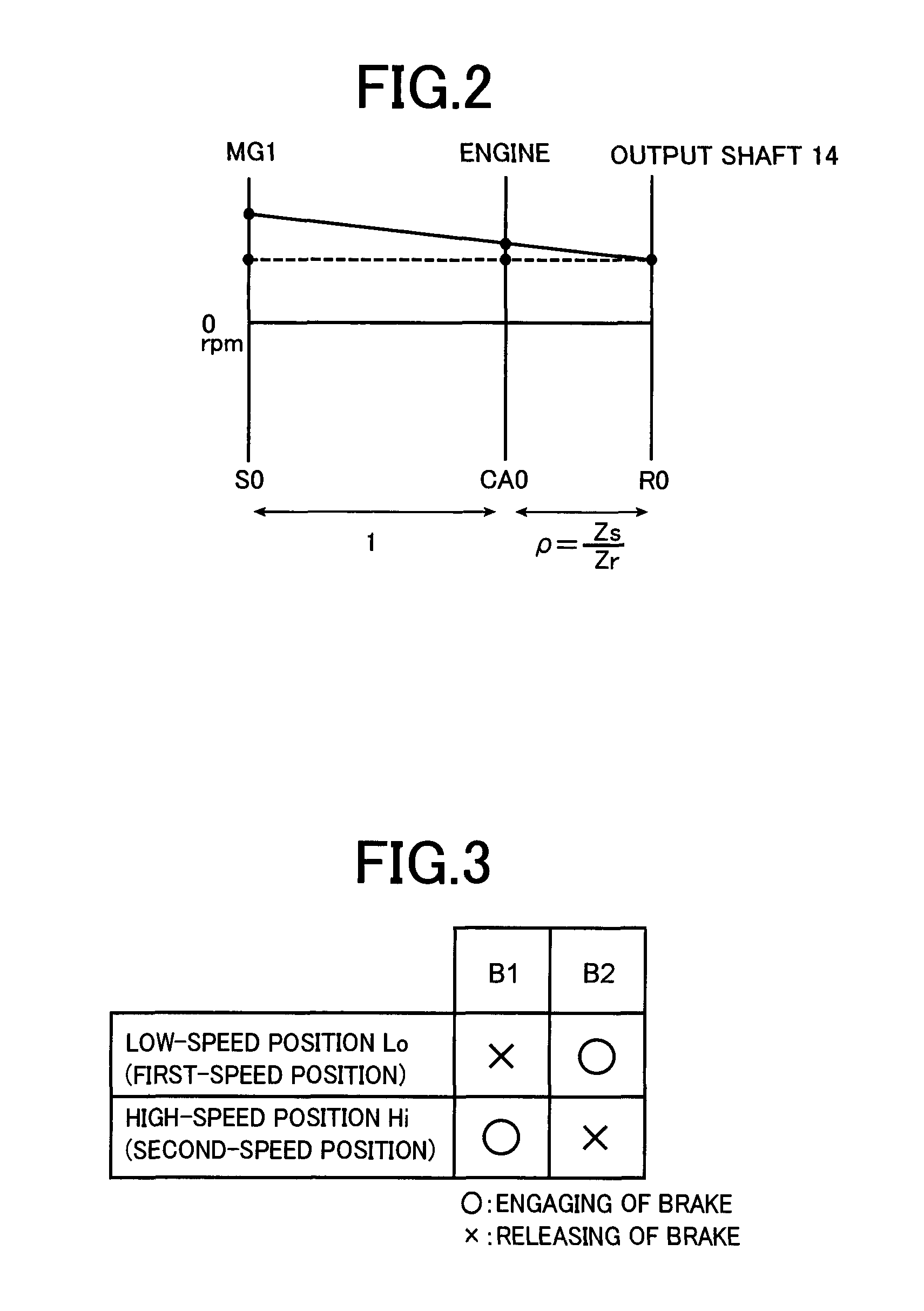Control apparatus for vehicular power transmitting system
a control apparatus and transmission system technology, applied in the direction of electric devices, process and machine control, instruments, etc., can solve the problems of difficult to reduce the size and cost of an electric circuit including the smoothing capacitor, and reduce the output torque, so as to reduce the size and cost of an electric circuit, limit the reduction of output torque, and reduce the above-described electric motor torque.
- Summary
- Abstract
- Description
- Claims
- Application Information
AI Technical Summary
Benefits of technology
Problems solved by technology
Method used
Image
Examples
embodiments
[0033]FIG. 1 is the schematic view for explaining a power transmitting system 10 of a hybrid vehicle (hereinafter referred to as “vehicular power transmitting system 10”) to which the present invention is applicable. As shown in FIG. 1, the vehicular power transmitting system 10 is provided with a main drive power source in the form of a first drive power source 12, a drive wheel-side output shaft 14 functioning as an output member (hereinafter referred to as “output shaft 14”), a differential gear device 16, a second electric motor MG2, and an automatic transmission 22. In the vehicular power transmitting system 10, a torque of the first drive power source 12 is transmitted to the output shaft 14, and is then transmitted from the output shaft 14 to a pair of right and left drive wheels 18 through the differential gear device 16. Further, the vehicular power transmitting system 10 is configured such that the second electric motor MG2 is operatively connected to the output shaft 14 t...
PUM
 Login to View More
Login to View More Abstract
Description
Claims
Application Information
 Login to View More
Login to View More - R&D
- Intellectual Property
- Life Sciences
- Materials
- Tech Scout
- Unparalleled Data Quality
- Higher Quality Content
- 60% Fewer Hallucinations
Browse by: Latest US Patents, China's latest patents, Technical Efficacy Thesaurus, Application Domain, Technology Topic, Popular Technical Reports.
© 2025 PatSnap. All rights reserved.Legal|Privacy policy|Modern Slavery Act Transparency Statement|Sitemap|About US| Contact US: help@patsnap.com



